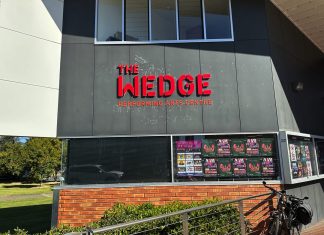LETTER TO THE EDITOR:
I AM writing with regard to the decision facing the Victorian Government regarding the Heyfield sawmill for $40 million and access to native forests for the next 26 years.
There is a key aspect of the Central Highlands story not yet raised but that every Victorian should be asking.
If the Victorian Government is going to make a $40 million investment in the region, is logging the best option for the region for jobs and the Victorian taxpayer?
Based on substantial evidence, the answer is no.
The real goldmine in this region is water yields and tourism, and they are not compatible with logging.
Per hectare of forest per year, tourism is currently worth double the value of the timber, and could be much higher with investment.
Logging is already harming tourism, and continued logging will make it worse.
Rubicon Valley Horse Riding [near Lake Eildon] was a thriving family business for most of the last 45 years, taking hundreds of riders through the Rubicon State Forest each year.
School groups were an important part of their business.
However, since the beauty and tranquillity of the region has been destroyed by logging, its business is dwindling, and most school groups have stopped returning.
It is understandable why groups are put off, after being woken at three, four, five and 6am by loud forestry truck hydraulic breaks and feeling they are risking their lives negotiating the massive speeding trucks on the mountain roads.
The once scenic skylines have ugly scars, and during the peak Easter tourism season the air is choked with smoke from logging coupes being burnt off 60 per cent of the cut forest remains on site as waste and is burnt?
Many timber production areas have successfully transitioned to nature-based tourism and reaped the results.
When logging ceased in Queensland’s Wet Tropics World Heritage Area, people were worried about what the economic impact would be.
But within one year, tourism was generating seven times more income for the region than logging previously had.
Any visitor that has seen the traffic along Black Spur on a weekend and the thriving caf s from Healesville to Warburton will appreciate the tourism drawcard that tall old growth forests have.
If we cut them down, we lose this opportunity.
On average, tourism jobs are also higher paid, longer term and result in more flow-on jobs in the region than logging industry jobs.
We should also take into account the huge value of the water generated by old growth forests, which per hectare is worth 10 times the industry value of the timber.
Regrowth forests have much reduced water yield and quality for up to 50 years compared to older forests.
The water from these forests is important to both Melbourne and towns north of the divide.
Tourism and water present a more socially and economically sustainable future for the Central Highlands region than logging.
The logging industry has been in substantial decline for decades despite being heavily subsidised by Victorian taxpayers.
Even in the peak of the current Regional Forest Agreement, mills were closing, such as at Yea.
Why doesn’t logging work?
The machinery costs are incredibly high, and the timber really isn’t there.
Decades of over-cutting have greatly reduced supplies, and fires have exacerbated this (72,000 ha was burnt during Black Saturday).
Even if the Heyfield sawmill received the $40 million, it is likely to fold within the decade and sawmill workers will still lose their jobs, but at that point we may also have lost the tall forests that their kids can build a career on.
Editor’s note: The ASH mill does not use timber from old growth forest. Timber is sourced from regrowth forest areas. ASH maintains that 100 per cent of each log it receives is used, including sawdust which is used to power kilns, for stand areas for cattle and for poultry.






